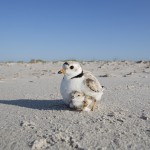-

Celebrating Birds and Their Habitats Conserved in 2023: Reducing Threats and Building the Bird Conservation Movement
https://youtu.be/LFYcGi6GnA0 Reducing Threats to Birds - Across the Americas ABC is committed to addressing key threats to birds so that habitats are healthier and more safe. Working with policymakers, partner groups, and the private sector, we develop and implement solutions… Read More »
-

Bird Conservation Successes in a Milestone Year
Crested Eagle female. Photo by Hugo Alejandro Herrera. To ensure ABC's critical bird conservation work continues to expand into the new year, ABC has launched a special Every Acre Counts 1:1 Match, with a goal of raising $1.5 million for… Read More »
-
Farewell to ABC's George and Rita Fenwick
After successfully leading American Bird Conservancy for nearly 24 years, George Fenwick (along with Rita Fenwick, our long-time head of Development) is stepping down on May 31. In this era of change at ABC, we asked some of ABC's best friends… Read More »
-
Meet Louie, A Happy Indoor Cat (Part 2)
If you missed our first interview with Christiana, please check it out here. After you adopted Louie from the shelter, how did you help him thrive as a happy indoor cat? In terms of enjoying the indoors, I’ve found with… Read More »
-
Top Ways You Can Help Birds, from Coffee to Collisions
We can make great strides to strengthen bird conservation when people take small but powerful actions to live out their bird conservation values. Here are ten ways you can help birds and do your part to shape the future for… Read More »
-
Bird News Roundup: Week of 12/16/18
With so much news and the busy holiday season, it can be difficult to keep up with bird conservation stories. Here’s a roundup of some of the top articles that recently piqued our interest and relate to work ABC is… Read More »
-
Parrot Paradox: The Unprotected, Endangered Red-crowned Parrot
How humanity threatens, benefits, and can save an endearing, range-restricted bird. The Red-crowned Parrot could be a poster-bird for the travails facing wild parrot populations around the world. Pummeled for decades by the one-two punch of habitat loss and capture… Read More »
-
Blue Jay
The brash and beautiful Blue Jay is seldom regarded with indifference. Some think it's an aggressive bully, while others love its boisterous, sociable nature. A member of the Corvid family, related to the Common Raven and Green Jay, the Blue… Read More »
-
Carolina Wren
"Like others of its tribe, the Carolina Wren is the embodiment of tireless energy and activity," wrote ornithologist Arthur Cleveland Bent, "seldom still for a moment, as he dodges in and out of the underbrush or creeps over and around… Read More »
-
White-breasted Nuthatch
The confiding, acrobatic White-breasted Nuthatch delights many a backyard birder with its head-down antics and nasal calls. Sometimes described as the "upside-down bird" or " wall walker," this agile little songbird is often seen in the company of other familiar… Read More »
-
Rufous Hummingbird
At a tad over three inches long, the feisty red-and-orange Rufous Hummingbird is a tiny warrior, readily attacking birds many times its size, as well as large insects or anything else it perceives as a threat to its territory. It… Read More »
-
Pileated Woodpecker
With flashing black-and-white wings and a bright red crest, when a crow-sized Pileated Woodpecker swoops by, even the most experienced birders stop in their tracks. This is the largest of North American woodpeckers. In the United States, only the Ivory-billed… Read More »
-
Tufted Titmouse
The active and agile Tufted Titmouse is easily recognized by its jaunty crest of gray feathers, big black eyes, and rust-colored flanks. This familiar bird feeder visitor often joins mixed foraging flocks with other common backyard birds such as the… Read More »
-
Mourning Dove
The handsome Mourning Dove is a familiar sight to most people — beige-brown above and pinkish-brown below, with black spots on its wings and an iridescent pink-and-blue flash on its neck. A ring of vivid blue skin encircles its large,… Read More »
-
Northern Flicker
The Northern Flicker is a standout, even in an unusual family of birds that includes the pink-and-green, flycatching Lewis's Woodpecker and the clown-faced, nut-hoarding Acorn Woodpecker. This brownish-gray woodpecker, larger than an American Robin, has a black-barred back and is… Read More »
-
Ruby-crowned Kinglet
One of North America’s smallest songbirds, the Ruby-crowned Kinglet is tinier than a Black-capped Chickadee and only a bit larger than a Ruby-throated Hummingbird. Unremarkable at first glance, this diminutive bird is a drab olive-green and gray, with a white… Read More »
-
Northern Mockingbird
The Northern Mockingbird is well-known for its powers of mimicry. Nicknamed the "American Nightingale," this remarkable species has been recorded as learning the songs and calls of hundreds of other birds, as well as musical instruments, car alarms, and many… Read More »
-

Migrating Birds Could Use a Helping Hand – Ten Ways People Can Protect Birds This Spring
Allen's Hummingbird by Susan Beree (Washington, D.C., April 21, 2011) As warmer temperatures begin to arrive, American Bird Conservancy (ABC) often gets asked how people can help birds. Toward that end, ABC has identified the top ten things people can… Read More »
-

Red-breasted Nuthatch
Once known as the Canada Nuthatch or Red-bellied Nuthatch, the active, compact Red-breasted Nuthatch is a common resident of northern and western coniferous and mixed forests in the United States and Canada. Usually well-hidden within the thick forest it favors,… Read More »
-
Gray Catbird
The Gray Catbird is a familiar member of the Mimidae (mimic) family, a group of birds that includes noted songsters such as Northern Mockingbird and Sage Thrasher. Like its relatives, the Gray Catbird mimics a variety of sounds, but this… Read More »












































